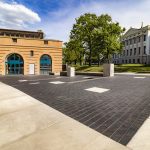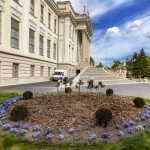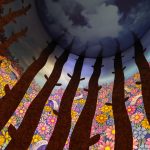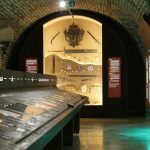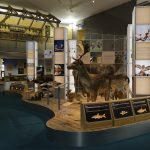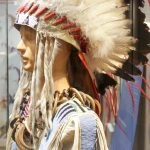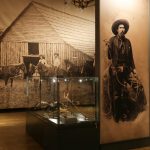The patina building of the Móra Ferenc Museum was completed in 1896, in a neoclassical style based on the camels of Antal Steinhardt and Adolf Láng. The joint museum and library institution was called the Palace of Culture, which split into two in 1950 – the museum was then named after Ferenc Móra.
In the 19th century, the public collection was managed by János Reizner, an excellent connoisseur of the history of the city of Szeged, and at the beginning of the 20th century, it was managed by museologists well-known as writers and journalists, including István Tömörkeny, Ferenc Móra, Ottó Trogmayer, and currently the museum is headed by archaeologist Ottó Fogas.
The Móra Ferenc Museum, with its public collection of more than 1.2 million registered artefacts, is one of the country’s largest county-wide city museums. It has a very rich archaeological, natural science, ethnographic, fine arts, numismatic and historical collection. The stock continues to grow through further excavations, gifts and purchases. Among his precious treasures are, among others, the charcoal and color sketch of Mihály Munkácsy’s Conquest, Pál Vágó’s painting of the Szeged flood of 1879, Giorgio Vasari’s masterpiece Angel’s Welcome, and the find in Nagyszéksós.
In 2020, the museum underwent a large-scale renovation. The facade was renewed, the building was modernized and new permanent exhibitions were created.
The natural science exhibition, which was expanded with a museum pedagogy room and various interactive elements and games, became the main theme of the living world of the Tisza and its floodplain. The exhibition is interesting for families, both young and old.
The Móra exhibition, which is supposed to present the life work of the namesake of the cultural palace, bears many names. Móra, who was a committed conservationist, already recognized the importance of environmental protection a hundred years ago, and this message and aspect of his life’s work is even more important and very relevant today. Accordingly, it presents Ferenc Móra’s life journey and his rich and varied work through his intimate relationship with nature.
The Castle’s permanent exhibition presents several important historical events from Szeged’s past: visitors can learn about the history of the former Szeged Castle, the world of witch trials and outlaws, and the destruction of the Nagyárvíz.
You can look down on downtown Szeged from the two viewing platforms on top of the Móra Ferenc Museum. The area around Széchenyi Square can be seen from the smaller observation deck, and the Tisza and the Belvárosi Bridge can be observed from the larger observation deck. A special device, a chronoscope, awaits those interested in the larger observation deck. Looking into this, the downtown of Szeged in the 1870s is revealed to our visitors.
The museum is currently hosting a large-scale international exhibition, the legendary Wild West exhibition guides visitors to the world of cowboys and Indians. The main material of the exhibition – approximately 90 original objects – came from Oklahoma, one of the largest cowboy and western museums in the USA. Items include saddles, boots, hats, full cowboy clothing, spurs, knives, and other interesting items of use and wear.
Further information: https:moramuzeum.hu




